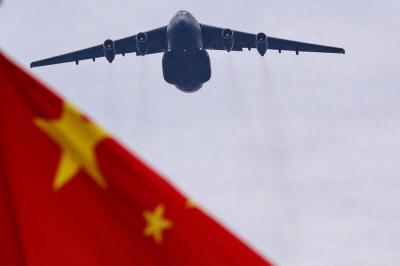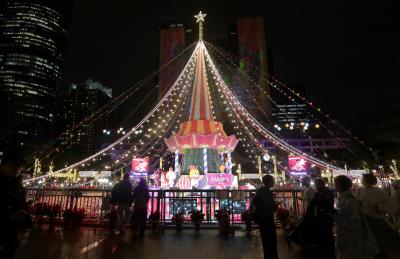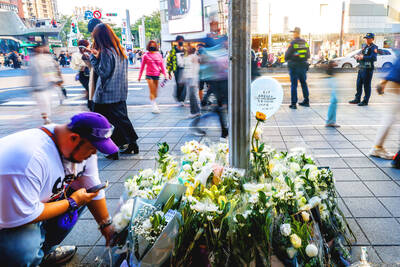Starting on July 1, Kaohsiung City, Kaohsiung County and Pingtung County will become the first areas in Taiwan to implement, on a trial basis, the Environmental Protection Administration’s (EPA) air pollution quota control system.
Under the plan, factories in the area will be granted an emissions quota, while old factories that manage to cut emissions levels through the purchase of new equipment will pay a reduced mandatory fee for the air pollution they cause.
The quotas can also be sold to other factories, said Lee Mu-sheng (李穆生), director of the city’s Environmental Protection Bureau.
Factories that experience difficulties cutting their emissions can encourage their employees to use public transport and subsidize them if they do so, allowing the company to then “deduct” the emissions saved on transport from the total pollution the firm produces, he said.
The plan is expected to force old factories to become more environmentally friendly and discourage the establishment of new factories in the area, Lee added.
“In the past, the plan would have met with strong opposition from the industrial sector, but environmental awareness has gained the upper hand in recent years and the city government believes it is time to implement the policy,” Lee said.
“If we don’t do it now, we will regret it in the future,” he added.
Air pollution is a major issue in the Kaohsiung area as several of the nation’s major industrial clusters are located in the city and nearby Kaohsiung and Pingtung Counties.
The Air Pollution Prevention Act (空氣污染防制法) allows the EPA to impose an air pollution ceiling on one or a number of cities and counties and to draw up plans to reduce pollution in the area. The act also empowers the EPA to auction emission quota permits.

Beijing could eventually see a full amphibious invasion of Taiwan as the only "prudent" way to bring about unification, the US Department of Defense said in a newly released annual report to Congress. The Pentagon's "Annual Report to Congress: Military and Security Developments Involving the People's Republic of China 2025," was in many ways similar to last year’s report but reorganized the analysis of the options China has to take over Taiwan. Generally, according to the report, Chinese leaders view the People's Liberation Army's (PLA) capabilities for a Taiwan campaign as improving, but they remain uncertain about its readiness to successfully seize

Taiwan is getting a day off on Christmas for the first time in 25 years. The change comes after opposition parties passed a law earlier this year to add or restore five public holidays, including Constitution Day, which falls on today, Dec. 25. The day marks the 1947 adoption of the constitution of the Republic of China, as the government in Taipei is formally known. Back then the Chinese Nationalist Party (KMT) governed China from Nanjing. When the KMT, now an opposition party in Taiwan, passed the legislation on holidays, it said that they would help “commemorate the history of national development.” That

HORROR STORIES: One victim recounted not realizing they had been stabbed and seeing people bleeding, while another recalled breaking down in tears after fleeing A man on Friday died after he tried to fight the knife-wielding suspect who went on a stabbing spree near two of Taipei’s busiest metro stations, Taipei Mayor Chiang Wan-an (蔣萬安) said. The 57-year-old man, identified by his family name, Yu (余), encountered the suspect at Exit M7 of Taipei Main Station and immediately tried to stop him, but was fatally wounded and later died, Chiang said, calling the incident “heartbreaking.” Yu’s family would receive at least NT$5 million (US$158,584) in compensation through the Taipei Rapid Transit Corp’s (TRTC) insurance coverage, he said after convening an emergency security response meeting yesterday morning. National

Taiwan has overtaken South Korea this year in per capita income for the first time in 23 years, IMF data showed. Per capita income is a nation’s GDP divided by the total population, used to compare average wealth levels across countries. Taiwan also beat Japan this year on per capita income, after surpassing it for the first time last year, US magazine Newsweek reported yesterday. Across Asia, Taiwan ranked fourth for per capita income at US$37,827 this year due to sustained economic growth, the report said. In the top three spots were Singapore, Macau and Hong Kong, it said. South